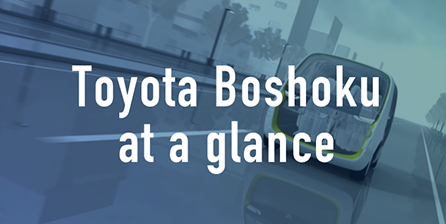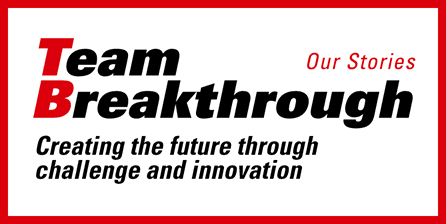Stakeholder Engagement
Basic stance
The Toyota Boshoku group places importance on stakeholder engagement. We listen to the opinions of our stakeholders, including customers, shareholders, investors, company members, suppliers and local communities by creating various opportunities for communication on a daily basis, and make use of this feedback in management.
Stakeholder Engagement
| Communication Tools, Etc. | Communication Opportunities | Communication Content | |
|---|---|---|---|
| Local Communities | Factory tours (if and when necessary; FY2024: 95 times) | Hosting social welfare organizations, local schools, students, customers, etc. | |
| Local events (three times annually) | Participation of volunteer company members in the operation of local festivals, and inviting local residents to our events | ||
| Community dialogue and opinion exchange meetings (three times annually) | Holding roundtable meetings with local residents living in the areas around our plants | ||
| Customers | Sales activities (if and when necessary) | ||
| Exhibitions (if and when necessary) | Sales promotions to appeal to customers based on our high technological capability and quality | ||
| Shareholders and Investors |
|
General Meeting of Shareholders (once annually) | |
| Financial Results Presentation (four times annually) | Explaining our quarterly financial results | ||
| Business briefing (FY2024: two times) | Explaining our strategy and business initiatives, etc. | ||
| Briefings (if and when necessary) | Small group meetings with securities analysts, institutional investors and management | ||
| Individual meetings (if and when necessary) | Attending interviews with securities analysts and institutional investors | ||
| Factory tours (FY2024: one time) | Plant tours, technical presentations, etc., to deepen understanding of the business | ||
| Exhibitions (FY2024: three times) | |||
| Company Members |
|
Internal newsletters publication (10 times annually) | |
| Labor and Management Council (four times annually) | Holding discussions between the company and the labor union on issues facing the company, and negotiating and resolving labor-management problems related to working conditions, etc. | ||
| Labor and Management Meeting (twice annually) | Sharing information and exchanging opinions on issues facing the company and labor unions, the current situation, etc. | ||
| Various training programs (if and when necessary) | Implementing training programs to promote company members' growth by segment, job level, etc. | ||
| Meetings with supervisors and subordinates (three times annually, Toyota Boshoku group) | Checking the strengths, development issues, and future career paths of subordinates, and motivating them | ||
| Dialogue with management (FY2024: four times) | Holding roundtable meetings between members promoted to G1, G2, G3(managers) positions and the President, and between the labor union and the President | ||
| Suppliers | Purchasing activities (if and when necessary) | ||
| Global Annual Supplier Meeting (once annually) | Message from the President, explaining global purchasing policy, and holding commendation awards for suppliers | ||
| Supplier CSR study sessions (once annually) | Spreading and promoting the Supplier Sustainability Guidelines | ||
| Supplier Satisfaction Survey (once annually) | Conducting a questionnaire to maintain and continue our Basic Purchasing Policy of Maintaining Open, Fair and Transparent Trade, and sharing the aggregated results with purchasing division staff and Toyota Boshoku company members | ||
| Self-assessments based on the Supplier Sustainability Guidelines (once annually) | Requesting self-assessment by suppliers based on the Guidelines, conducting visits and exchanging opinions for improvement in line with the response results |
Enhancement of corporate value and reinforcement of information disclosure
The Toyota Boshoku group has stated in our disclosure policy that we are committed to “disclosing information required by shareholders, investors, business partners and local communities in a timely and appropriate manner as well as to carrying out public information-sharing activities that earn the trust of society.” In this sense, we are striving to disclose information in an accurate, timely and fair manner. In order to ensure the appropriate disclosure of information, we strictly manage corporate information and are working actively on disclosure in the Information Disclosure Committee, which is comprised of members from Toyota Boshoku’s Accounting & Finance Division, Legal Division, Corporate Planning Division and the General Administration Division.
Organization chart concerning timely disclosure of corporate information

Communication with shareholders and investors
The Toyota Boshoku group actively promotes efforts to disclose information and communicate in an appropriate and timely manner in addition to striving to enhance corporate value so as to earn the trust and support of shareholders and investors.
General Meeting of Shareholders
(1) Arranging General Meetings of Shareholders while avoiding dates on which many such shareholders’ meetings are usually held
(2) Enabling the exercise of voting rights via the Internet
(3) Enhancing the content of the convocation notice
We are taking action to make it easier for people to exercise their voting rights.
| FY2024 | |
|---|---|
| Date | June 13, 2023 |
| No. in attendance | 237 |
| Voting participation | 90.02% |
Dialogue with institutional investors and analysts
We hold financial results presentations for institutional investors and analysts four times a year, as well as business briefings and ESG briefings. In fiscal 2024, we engaged in dialogue with a total of 426 companies, including individual meetings.
| FY2024 | |
|---|---|
| Individual meetings | 181 companies 285 persons |
| Financial results presentations, business briefings, Mid-Term Business Plan briefing | 231 companies 411 persons |
| Conferences with institutional investors outside Japan | 14 companies 14 persons |
Dialogue with individual investors
We endeavor to actively participate in briefings for individual investors, wherever possible.
Distribution of profits to shareholders
In fiscal 2024, as a result of a comprehensive review of the consolidated financial results for the year ended March 31, 2025 and other matters, we paid a year-end dividend of 43 yen per share. Combined with the mid-year dividend, this meant that for the full year, the dividend paid was 86 yen per share.
We will actively invest profit generated through our business activities into growth areas to maximize total basic earnings per share and increase shareholder value.
Dividends

Dividend payout ratio

Communication with customers
Please see “Customer First, Quality First”.
Communication with company members
Please see “Job Satisfaction and Employment”, “Diversity and Inclusion”, “Safety”, “Health” and “Human Resources Development”.
Communication with suppliers
Please see “Suppliers”.
Communication with local communities
Please see “Social Contribution”.





